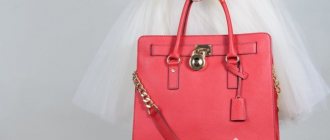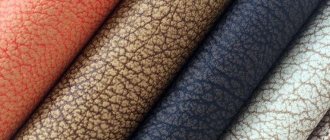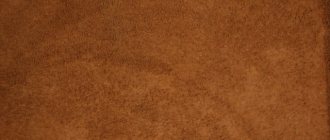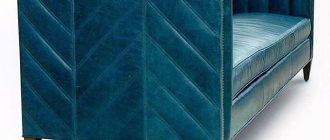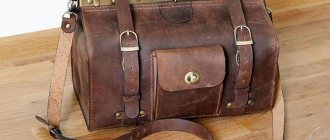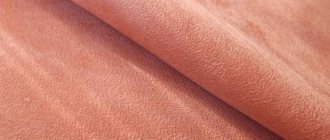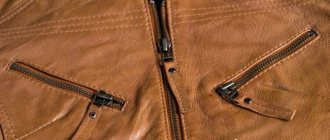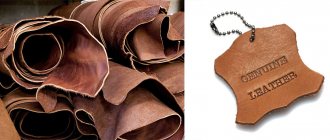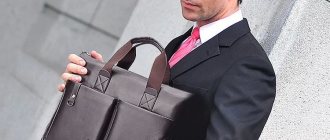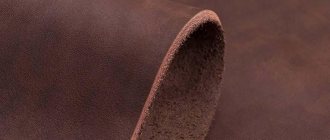When a person buys leather goods, he runs the risk of being deceived. Many sellers pass off leatherette products as genuine leather products. To avoid receiving counterfeit goods, you need to check them properly. More information about how to distinguish natural leather from artificial leather will be discussed in this article.
Inspect the surface
After studying the information on the label and packaging of the product, you should carefully examine the surface. The material has minor defects that are typical of animal skin. These flaws are microscopic and can only be seen with careful observation.
Slight unevenness and the presence of “grains” and pores on the surface indicate that this is a natural material. If upon inspection small creases and barely noticeable scratches are found, then this is also considered evidence of the animal origin of the raw materials.
Unlike the original, the pressed leather (PU), made from polyurethane, has a smooth surface without flaws. Externally, leatherette is very similar to natural material upon quick inspection.
How to check leather shoes
High-quality leather, including patent leather, shoes do not get wet, retain heat, guarantee comfortable wear and last a long time. In such shoes, your feet do not get cold or sweat. But to get the benefits of such products, it is important to choose real leather.
Genuine leather shoes must contain a sticker that includes information about the materials from which the sole and lining, the upper and lower parts of the product are made. In addition, it has a curly badge that says leather (English), genuine cuir (French), echtleder (German) or vera pelle (Italian) depending on the country of the manufacturer. If you see an icon in the form of a diamond made of pressed leather, it means that artificial raw materials were used.
The backing material of leather shoes will be fleecy, and the outer fold will resemble a rounded roller. Faux leather has a thin and flattened fold, and the inside material is smooth. In addition, the reverse side of the fake is made of textiles. How to properly care for leather shoes, see the link.
Product cost
Genuine leather is expensive, which is justified by its service life. The most expensive is cow's, because it has special characteristics. Cowhide can be dyed. It is stronger and more durable.
In the animal materials segment, raw materials also vary in cost. For example, split wood is a material obtained by lamination. It is cheaper than full-grain leather, which is ideal for making belts, boots and other products that require high durability.
Properties and types of genuine leather
Genuine leather comes in different types and varies in thickness, resistance to wear, breathability and other similar parameters. There are three main methods of leather processing. Raw leather is a skin that, after certain procedures, is first soft and elastic, and after drying, hardens. This is a suitable solution for covering various objects, including drums and other similar musical instruments.
A common type is tanned leather, which is a strong and durable, plastic and elastic, soft material. In addition, it is resistant to moisture, heat and cold, and temperature changes. Raw meat is used for orthopedic shoes, horse saddles, bicycles, motorcycles and other items. The result is a durable, reliable and rigid material.
Elasticity and color when bending
Another way to check whether the skin is leathery or not is to analyze the color and elasticity. After examining the front surface, you will need to recognize the behavior of the material. To do this, the skin needs to be crushed. The real one will wrinkle and form soft folds, which will smooth out after exposure. The substitute, under force, will resist, trying to maintain its shape and rigidity.
The bright color of the dye cannot serve as a criterion for determining naturalness. Some species are susceptible to coloration and can be misleading.
When subjected to force, natural leather is more elastic than artificial leather, soft wrinkles appear at the site of creasing, and in these areas the color slightly changes shade. Dermantin is difficult to crumple, trying to maintain its shape. In places where the artificial material folds, marks remain in the form of wrinkles.
In some cases this test is difficult to perform. For example, when choosing boots or a pair of shoes. You can focus on tactile sensations: when touched, the leather surface seems warm, despite the fact that leatherette causes a feeling of coolness. This property is also preserved by products made from natural patent leather.
Characteristics of artificial leather
Natural leather imitates leatherette. This is a synthetic leather that includes knitwear, polymer coating and impregnation, and only one surface layer of natural raw materials. Often, leatherette is characterized by high resistance to dampness and frost, bending and deformation. Therefore, genuine leather becomes more difficult to distinguish from artificial leather.
Leatherette products are popular due to their availability and low price, practicality and long service life. There are also different types of artificial leather. This is dermantine, vinyl and eco-leather, pressed type.
Vinyl leather is a durable and reliable material that completely imitates natural raw materials and is suitable for drapery. Dermantin represents products with a slight odor. It is resistant to high and low temperatures, the negative effects of moisture and abrasion. It has an affordable price compared to natural raw materials.
Another type of leatherette is eco-leather. This is an elastic, soft and comfortable odorless material that does not allow air to pass through, does not crack or deform. The products are resistant to wear and abrasion. Due to modern technology and processing, natural and artificial materials are becoming more difficult to determine. Let's take a closer look at how to recognize fake leather.
Internal and external coating
It is quite difficult to distinguish genuine leather from fake leather by its outer coating. The modern chemical industry creates new types of leather substitutes that are almost identical in appearance to natural leather. Artfully imitating texture, manufacturers are experimenting with various coatings.
But you can distinguish between the two types of material like this: a natural surface cannot be perfectly smooth. When you pass your hand, you feel heterogeneity. Genuine leather has a rough texture, unlike fake leather.
Important! The surface of genuine leather cannot be large even if it has been subjected to a varnishing process.
The reverse side of the leather is invariably a suede surface. The reverse side of dermantine is a fabric or other textile base. Many manufacturers have learned to imitate suede texture on the reverse side of artificial leather. But even in this case there is a difference: natural suede is heterogeneous, warm when touched.
Markings on product labels
You can distinguish genuine leather from artificial leather by the label. You should look for a sticker on the product, a tag on the reverse side, or a piece of the material from which it is made. It contains information about the composition of the product (base and lining).
It is important to be able to decipher the markings on the tag. Peel refers to real leather. Skin with a diamond shape means that the product is made from natural but defective fabric coated with polyurethane. The hash mark indicates textile composition. If the seller convinces the buyer that the product is genuine, but the label shows a diamond, then it is a fake. This marking indicates an analogue.
Also on the tag of a leather item there may be an inscription in different languages:
- genuine leather (English);
- echtleder (German);
- cuir (French);
- verapelle (Italian).
These are graphic designations of natural fabric that will distinguish it from its synthetic counterpart.
By cost
You can distinguish leather from leatherette by price. Things made from real canvas are more expensive, since more expensive materials, more time, effort, and sophisticated technologies were used to make them.
However, the difference in price is observed even for products made from different types of leather. For example, pigskin is the cheapest. Fabric made from bovine, cow, and calf skin is used for sewing products in the mid-price segment. Sheep, goat, exotic (deer, crocodile, ostrich, snake) linen has a high price.
For your information. Patent leather is also expensive. To make it, the canvas is processed, primed, and then varnished. Accessories, inserts for clothes and shoes are made from glossy material. It requires special care.
The difference between leatherette and natural fabric is its affordable price, which attracts buyers. True, such products have many disadvantages.
According to the pattern and location of the pores
To distinguish leather from leatherette, you need to carefully examine the pattern. It is worth paying attention to the natural creases of the material, the depth and location of the pores.
Author:
Zakharova Nina Afanasyevna
I hope you like my article! If you find any shortcomings, just write to me about it! I am always ready for a conversation and will answer any questions you have, ask them!
